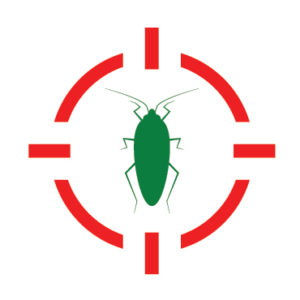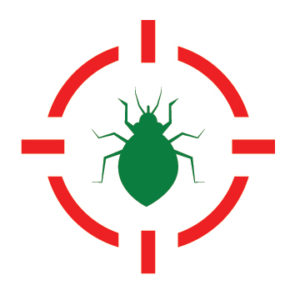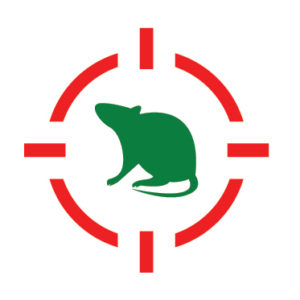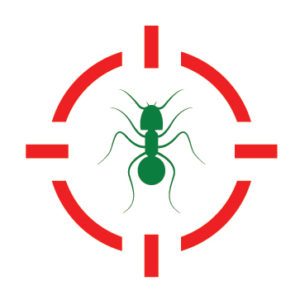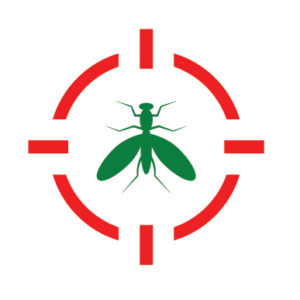CRICKET EXTERMINATION
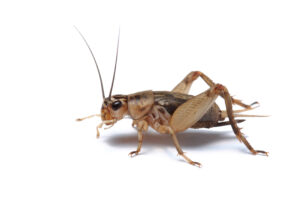
Signs of crickets
You may not know that your home has been infested by crickets other than the obvious sound of a lonely male cricket, but there are obvious signs that indicate their presence. A common sign of a house cricket infestation is the presence of multiple crickets inside your house. The loud chirping sound of crickets is another indicator of a cricket infestation. Moreover, if you find some chewed fabric in your house, this could indicate that you already have a serious infestation.
Once in a while, you may spot one or two crickets in your home’s exteriors walls, but if you begin spotting more and more crickets coming into your home, then this could be a sign of a bigger problem. In this situation, you need to take action by using home remedies or reaching out for an exterminator. Crickets are not known to cause diseases or any physical harm to humans or pets, but they do cause unnecessary burden to homeowners.
The sound of chirping crickets can ruin your sleep. It is easy to recognize these insects because of their loud chirping and they are more active at night. Once they have invaded your home, they can be annoying and irritating. They are small creatures, but they can be very destructive. Crickets can destroy carpets, fabrics in furniture, wallpapers, clothing, and other fabrics in the house. Outdoors, they will eat crops and insects in home gardens. Crickets prefer dark, warm, and moist areas.
The chirping of crickets usually comes from the male crickets. They normally chirp by rubbing their wings together. When the wings are rubbed, they produce a loud chirping sound. They do this to attract the female crickets for mating.
Life can be miserable when there is a cricket infestation in or around your home. Their loud chirping can keep you awake at night. It may be frustrating when you realize that the chirping is meant to attract more crickets in your home. Knowing how to get rid of crickets is vital.
The four common types of crickets are: house crickets, camel crickets, field crickets, and mole crickets.
Originally native to Asia, house crickets are light brown with a yellow hue, and they have long, pointed wings. They feed on paper and natural fabric.
Originally from Asia, the crickets get their name from their humped-back and long spider-like legs. They are mostly found around greenhouses. The camel crickets don’t chirp like other species of crickets.
A common set of cricket species found in North America, usually black in color. These crickets are slightly longer than the House Cricket. They reside in flower beds and grass. These crickets prefer to live outside and feed on plants, but when food is scarce they enter a house.
These crickets have large, shovel-like forelimbs which they use to burrow into soil. The adult mole crickets are rounded, winged and 1 to 1.25 inches long. You rarely see these crickets as they stay underground most of the time.
Ways to Get Rid of Crickets
Maintain your Yard
To get rid of crickets, ensure that your yard is well trimmed and neat. Bushes and trees around your home should be well maintained. Additionally, keep firewood away from the house, maintain short grass, and keep trash away from the house.
Use molasses
Molasses serves as excellent bait for crickets. Crickets love molasses, and this bait can be useful. The sweet scent usually lures them, and they end up jumping in it, thus making it easier for you to trap them. Mix 3 to 4 tablespoons of molasses in a bowl or a jar of water and then place the mixture in various parts of your house. The sweet scent will attract them, and they enter the jar where they end up drowning.
Use diatomaceous earth
Diatomaceous earth (DE) is a white powder that is usually obtained from the skeletons of algae. The powder is effective in getting rid of insects. Once they come in contact with it, they become dehydrated and die. You can sprinkle diatomaceous earth in areas where crickets like to stay.
Grow nitrogen-fixing plants
You can get rid of crickets by growing nitrogen-fixing plants. You can use this method to manage a cricket infestation. Crickets are known to feed on young plants or flowers in the garden. To prevent them from infesting your property, plant nitrogen-fixing plants. These include peas, beans, and legumes. These plants draw nitrogen gas and store it in their roots. Besides, planting garlic, clover, sweet potatoes, and sweet peas in your garden can also help in eliminating crickets.
Seal cracks
Eliminating crickets from your home begins with blocking their entry points. Look for any cracks within your home and seal them. Seal up the cracks using non-organic caulk. Crickets can squeeze themselves through tiny spaces. Walk around and seal the gaps between the bottom of doors and the floor.
Prepare a boric acid bait trap
To keep crickets away from your house, make a cricket trap. Mix two cups of cornmeal with two teaspoons of boric acid. Mix it well and then place the bait in cricket prone areas where crickets gather at night.
Turn off the lights
To drive crickets away from your house, ensure you turn your exteriors lights off. This is important because lights tend to draw crickets closer, especially during the nighttime.
Use pesticides
You can use pesticides to get rid of crickets and stop the infestation. Thoroughly spray it in the areas which are likely to be hiding places. Remember to wear protective gloves, glasses, and a mask while spraying. If you feel uncomfortable using this effective method, call in a qualified professional.
Use a glue board
A glue board can help get to rid crickets. Place the glue board near entry points of the chirping crickets. This is useful in luring the insects.
Avoid having overwatered areas
Avoid having stagnant water around your home. Use soil to fill in places where standing water has accumulated, and remove any pet water dishes in and around your compound at night.
Reduce the clutter in your yard
Crickets love clustered places. Ensure that your home is free from clutter to avoid cricket infestation. Keep children’s toys and furniture in order.
Natural predators
Some birds eat crickets. Place a bird feeder in your home garden and birds come along and feed on any cricket they find in there. Lizards and spiders are also known to be cricket predators too.
Call an exterminator
Instead of trying the DIY option of getting rid of crickets, call a qualified exterminator. The experts can treat your home, and crickets will be a thing of the past.
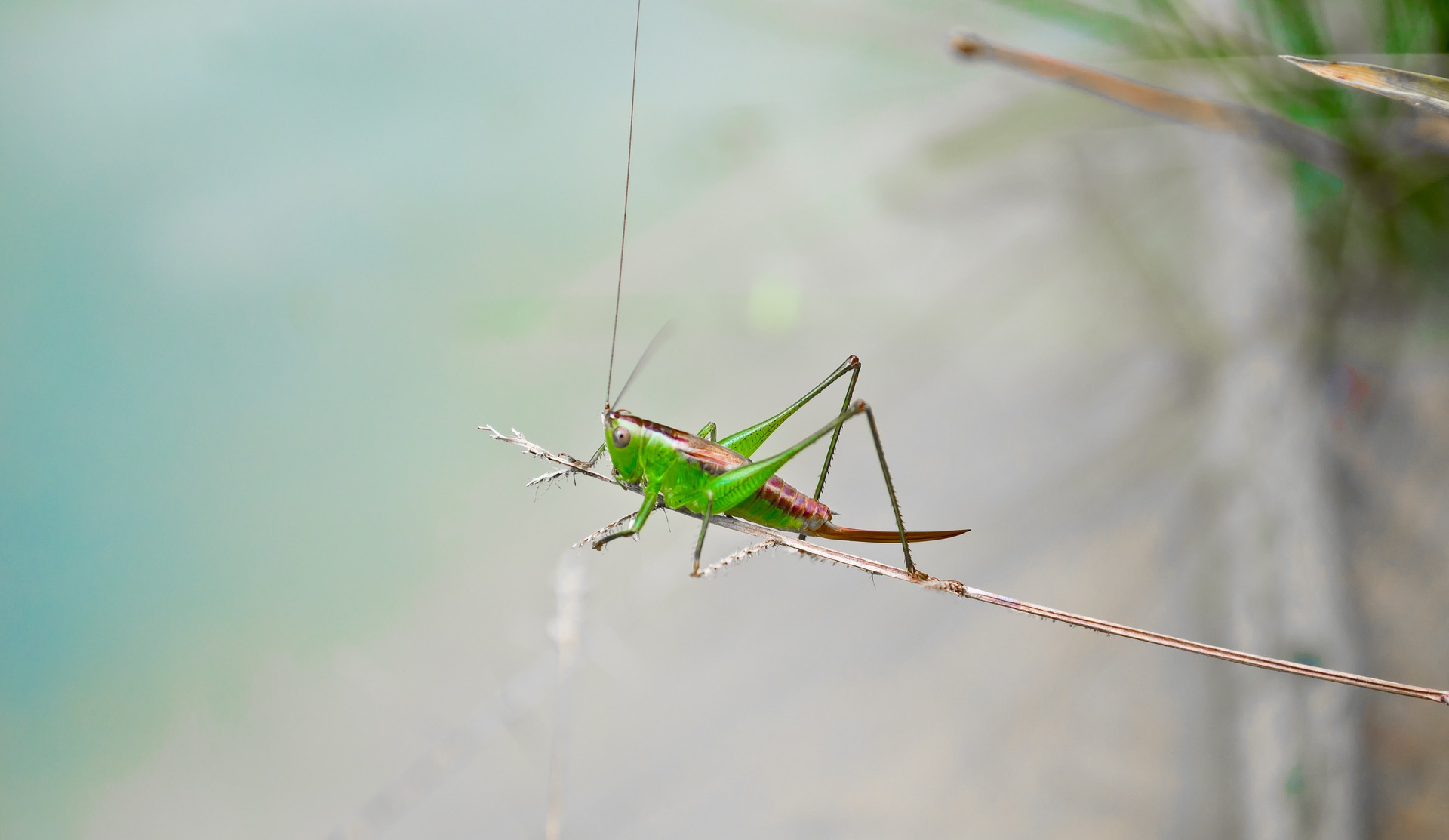
Tips on How to Get Rid of Crickets
Pest exterminator can use different methods to eliminate crickets. Examples include:
Crevice and crack treatment
This involves treating crawlspaces, wall voids, and other crevices and cracks where crickets hide with insecticides and hand dusters. They puff the dust underneath baseboards to create an added barrier of protection.
Trapping
Exterminators can use insect glue boards to trap crickets. These are sticky traps that are positioned in corners along the wall where the insects travel, and on either side of doors where pests crawl in under weather-stripping. When used smartly, sticky traps can significantly reduce cricket populations.
How much does professional cricket extermination cost?
In general, exterminating crickets from the interior and exterior areas of a typical property requires one visit from a professional pest exterminator. The cost of eradicating crickets ranges from $175 to $325. On average, homeowners spend about $250 to get rid of crickets from a 3,000 square foot property.
Controlling crickets satisfactorily typically involves treating both inside and outside a house and removing feeding and breeding sites outdoors. Using tight-fitting doors and screens is also essential. You should seal any openings to your home close to the ground level correctly.
Calling an exterminator is often times the best option when an infestation gets out of control. It is important to take the necessary steps to correct a problem from the start. This can help minimize issues and protect your home or business. Like most individuals, ensuring the continued peace of mind and safety of you, your business and your family for the months and years to come is a top priority. Hire a qualified pest exterminator today!
Find out from the exterminator when it is safe to clean and what cleaning protocols are recommended after any cricket infestation treatments have been completed. Chemical treatments often continue working for up to two weeks killing insects.
ALTERNATIVE SOLUTIONS
Alternative do it yourself methods to help get rid of pests inside your home.
Cricket extermination methods
- Apply diametaceous earth (DE) around baseboards in rooms where insects have been seen. DE scratches the cricket’s exoskeleton which leads to death by dehydration. DE also has the advantage of being non-toxic; it can be used safely in homes with children and pets.
- Place cricket traps and baits around outdoor sheds, wood piles and compost areas.
LOOKING FOR AN EXTERMINATOR?
SEARCH THE PEST EXTERMINATORS NEAR ME DIRECTORY.

